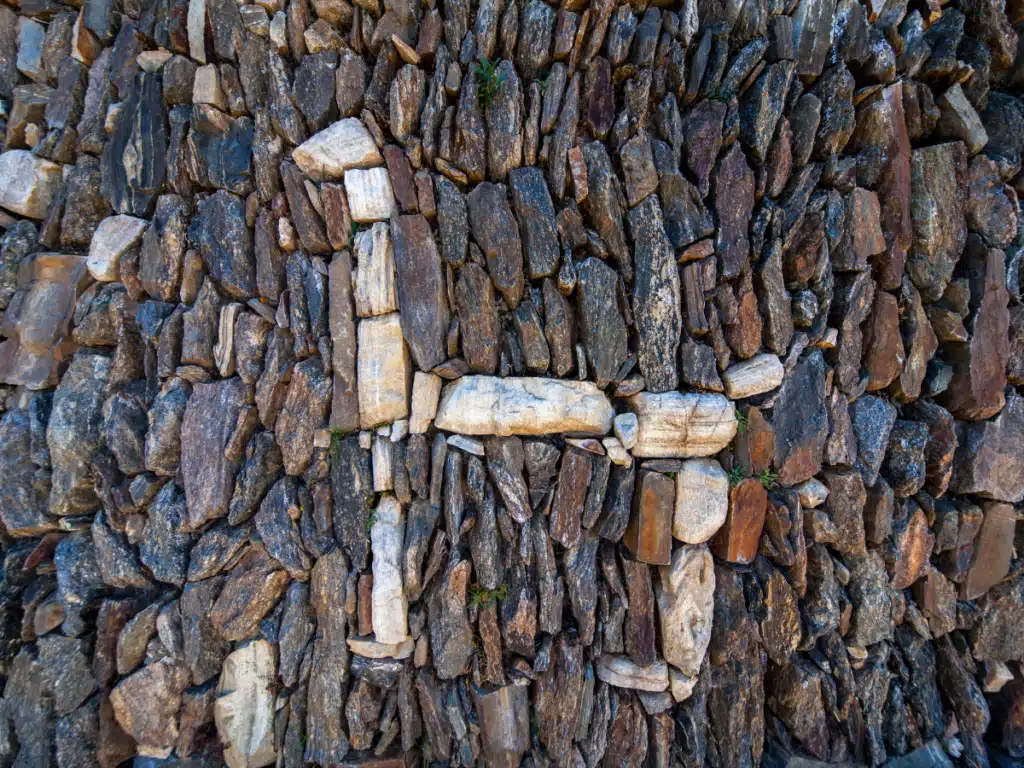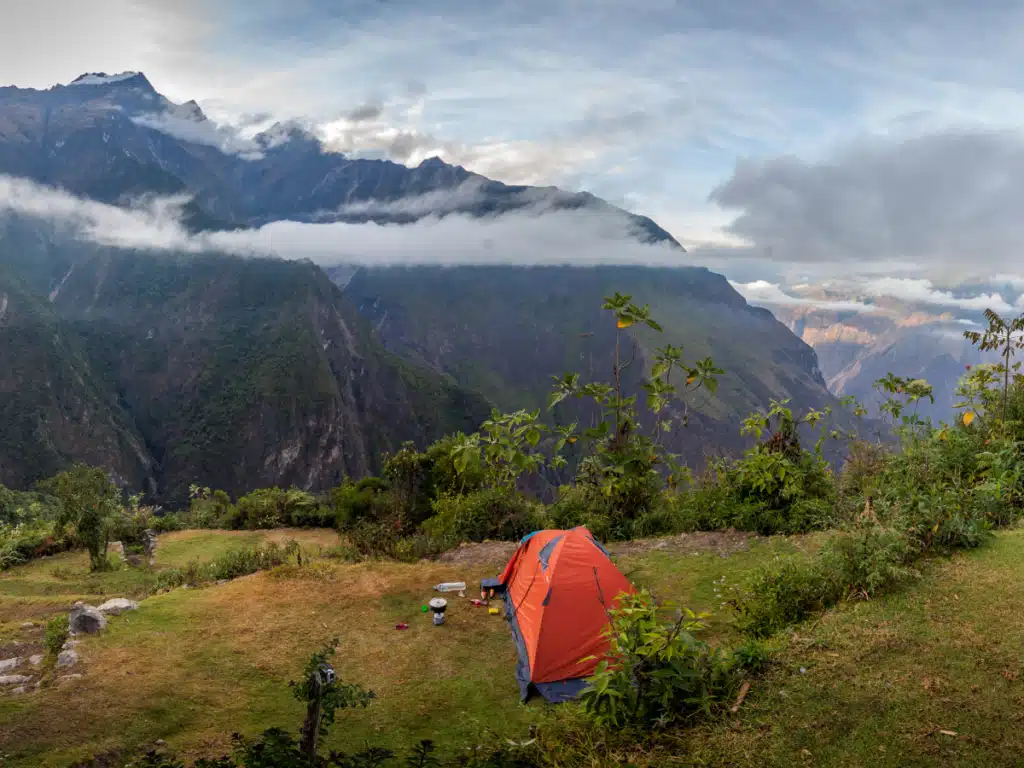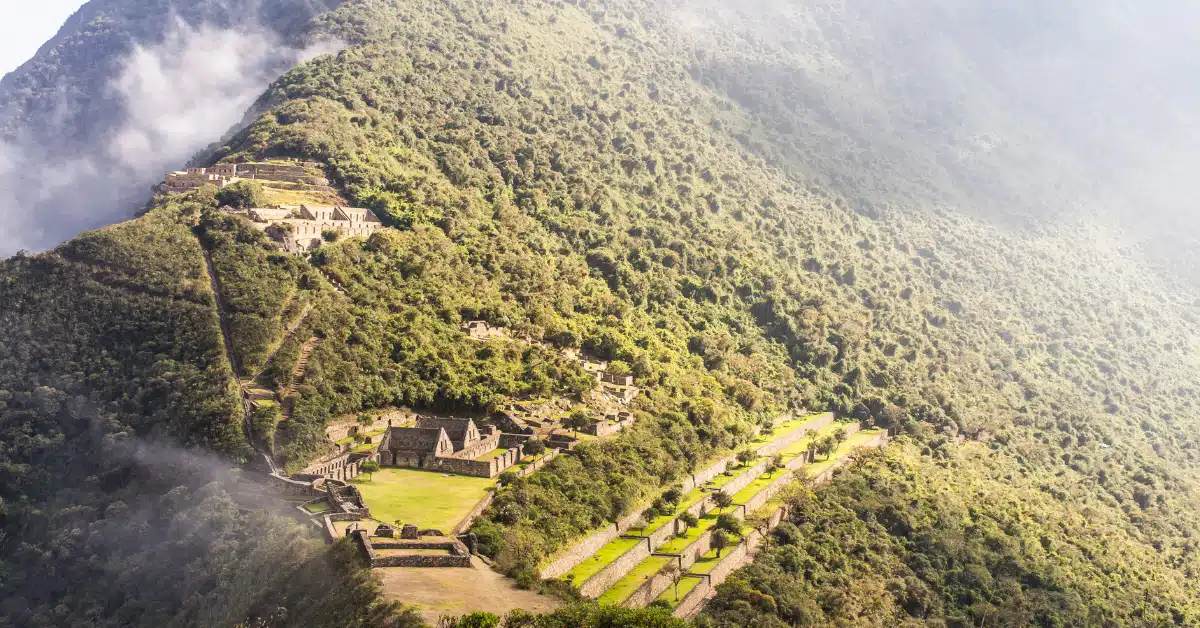Choquequirao: Ultimate Guide + Choquequirao Trek Overview to the Next Machu Picchu
Nestled in the mountains high above the Apurímac River, the ruins of Choquequirao are some of the most unique and fascinating Incan ruins in Peru. Practically unheard of until just several years ago, Choquequirao, in many ways, resembles Machu Picchu.
In other ways, Choquequirao and Machu Picchu couldn’t be more different. There’s no luxurious glass-topped train to reach Choquequirao, and certainly no backpacker town like Aguas Calientes just a short drive away. Choquequirao is remote, accessible only by a strenuous 4-day hike through the mountains – it’s challenging, but it’s one of the best things to do in Peru.
In this ultimate guide to Choquequirao, Peru, you’ll find everything you need to know to plan your visit. From the best Choquequirao trek recommendations to the ins and outs of what to expect once you make it to the ruins, you’ll find the advice you need to make your visit to Choquequirao an unforgettable one.

This post contains affiliate links that may reward me monetarily or otherwise when you use them to make qualifying purchases – at no cost to you. As an Amazon Associate, I earn from qualifying purchases. For more information, please read our disclosure policy.
Choquequirao
Choquequirao is located in the Cusco province, just above the Apurímac River which divides the provinces of Cusco and Apurímac. About 27 miles (45 km) southwest of Machu Picchu, Choquequirao is found within an area filled with countless ruins at the heart of the former Incan empire.
Due to its remote location, Choquequirao has the unique distinction – like Machu Picchu – of never having been “discovered” by the Spanish conquistadores. It remained hidden until the first documented visit by an outsider in 1710 by Juan Arias Diaz, though locals had long known of its existence.
The site’s incredible architecture, clinging to the mountainside and featuring extensive terracing, is remarkably similar to that of Machu Picchu. Its gorgeous views and mountain vistas also give it a feel that is eerily similar to Machu Picchu.
Read More: 25+ Best Things To Do in Peru
Choquequirao Altitude
The altitude at Choquequirao is about 9,950 feet (3,033 meters), meaning that the site’s elevation adds to the physical difficulty of reaching it. At this elevation, Choquequirao is higher than Machu Picchu (7,972 feet / 2,430 meters) but lower than Cusco (11,152 feet / 3,399 meters).
You’ll feel the elevation getting here, and it makes the four-day round-trip hike a challenging one even if you’re physically fit.
Make sure to take it slow, and spend time acclimating to the altitude before your Choquequirao trek if your itinerary allows for it. Come prepared with coca leaves and altitude acclimatization pills if you’re concerned about the altitude.
Choquequierao History
While Choquequirao first welcomed outsiders in the 1700s, it wasn’t until the 1970s that archeologists began their work at this remote site and began to get a better idea about the nature and scope of the ruins.
Much remains to be discovered, and while archeologists have plenty of theories about the site, much is still unknown. Historians believe that Choquequirao was built around the same time as Machu Picchu and even potentially by the same artisans.
Due to its location, it is thought to have served as a checkpoint and administrative center near Vilcabamba, the new Incan state constructed after the arrival of the conquistadores by exiled Incan king Manco Inca Yupanqui.
It was likely abandoned in the late 1500s after the kidnapping and murder of the last Incan king and the final collapse of the empire.

Choquequirao Ruins
The uncovered Choquequirao ruins currently cover about 1,800 hectares of land, though only an estimated 30-40% of the entire site has been explored and discovered.
The total site is an estimated 3 times larger than Machu Picchu! Plenty more buildings, terraces, and treasures remain shrouded by vegetation, just waiting to be uncovered.
Highlights of the ruins include countless terraces, multiple temples and altars, an advanced irrigation system, and a large central plaza with stunningly intact buildings that make for an impressive and beautiful arrival to the site. Choquequirao is divided into 12 distinct districts, which demonstrate the advanced urban planning that went into creating this site.
With only just a few groups of trekkers arriving at the Choquequirao ruins each day, you’ll get to enjoy the ruins almost to yourself. Exploring the ruins freely with your trekking guide is an absolutely fascinating and unforgettable experience, the likes of which you won’t find anywhere else in Peru.
Machu Picchu Packing List
Don’t prepare for your trip without reading out our ultimate Machu Picchu Packing List. We’ve listed everything you’ll need for the day of, and the rest of your Peru trip.
Choquequirao Llamas
One interesting and entirely unique detail of the Choquequirao ruins is the presence of the Choquequirao llamas, composed of special white quartzite stone wedged into the site’s terraces.
Only just uncovered in 2002, these 22 unique llamas cover the entire height of the terraces, followed by the figure of a single llama herder. It’s a beautiful work of art totally unique among similar Incan ruins.
While seeing the llamas firsthand can be challenging – the terraces are tall and quite steep – it’s a totally unique aspect of the ruins well worth looking forward to seeing.

Choquequirao Trek
Considered a challenging trek and one that should be taken quite seriously, the four-day Choquequirao trek is the only way to access the Choquequirao ruins. The vast majority of travelers agree that the Choquequirao trek was more challenging than they were expecting but worth it for the incredible experience at the ruins and gorgeous views along the way. It really is among the best things to do in Peru.
There are a few different Choquequirao trek routes and variations, though the vast majority of trekkers opt for the classic four-day Choquequirao trek.
Travel Essential
Don’t think about traveling without a good VPN (Virtual Private Network). Using a VPN while connecting to the internet is an easy way to keep your personal information safe from hackers and trackers. We’ve used NordVPN for years and couldn’t recommend it more – it’s a must for safety online, at home or abroad.
Classic Choquequirao Trek
The classic Choquequirao trek to the ruins is a four-day-long in-and-out trek originating from Cachora, a tiny town in the province of Apurímac.
If you’re picturing Choquequirao’s version of Aguas Calientes, you’re wrong! Cachora is quite sleepy, with just a few basic accommodations, stores, and restaurants catering to trekkers, including a limited few places for grabbing some last-minute gear.
It’s best to spend the night before your trek in Cachora so you can get an early start on the hike in the morning, though check with your trekking guide beforehand and reach out for specific instructions.
Day One
Day one of the Choquequirao trek starts from Capuliyoc, just outside of the town of Cachora. Though you can walk to the trailhead in Capuliyoc, save yourself a bit of distance and effort and take a taxi to the trailhead – the road is nothing special anyways.
At the trailhead, you can purchase tickets (approximately $18 USD) to the Choquequirao Archeological Park that are good for the duration of the hike. Just beyond the area you purchase your tickets you’ll find the Mirador Capuliyoc with an incredible view, just the first of countless stunning vistas you’ll enjoy over the next four days.
Day one of the Choquequirao trek consists mostly of hiking downward towards the Apurímac River, though you’ll want to continue upwards from there as far as you can to make for an easier day two. Push to either Santa Rosa Baja or further on to Santa Rosa Alta if you can!
Day Two
On day two, you’ll finally make your arrival to the Choquequirao ruins! Leave as early as you can in the morning so you’ll have as much time as possible to enjoy the ruins. From your start at Santa Rosa Baja or Santa Rosa Alta you’ll head up a steep grade until reaching the tiny town of Marampata.
Just after departing Marampata you’ll get your first glimpses of the terracing that surrounds Choquequirao. The journey is much more even – less of an incline – from here, and after arriving at the Choquequirao campsite you can set up your tent and then head straight to the ruins.
The ruins close at 5:00PM, so enjoy as much time here as you can!
Day Three and Four
The final two days of the trek are like the first two days in reverse. Wake up early to explore Choquequirao even more, including the llama terraces and any of the viewpoints around the site for incredible vistas of the mountains and ruins.
Technically, you can spend as long as you like here, even choosing to take a full day to explore the ruins and an extra night to camp at the campground. This will just add time to the trek overall, though you’ll certainly have a blast exploring the almost-empty site in its entirety.
Alternative Choquequirao Treks
There are a few ways to deviate slightly from the classic Choquequirao trekking route for those looking for slightly different paths or durations of hikes.
For hikers on a short time frame, consider taking the “Huanipaca” route after departing Choquequirao. This route takes hikers via Villa Los Loros, where you’d catch a taxi to Huanipaca to complete the journey rather than completing the hike to Cachora.
The Yanama Route – Choquequirao and Machu Picchu
Another popular Choquequirao trekking route is known as the Yanama Route, and though much longer, takes trekkers to both Choquequirao and Machu Picchu, as well as to some additional Incan ruins along the way. In total, the journey takes nine days.
The Yanama Route starts along the classic route to Choquequirao from Cachora but then connects up with the Salkantay trekking route to Machu Picchu. Known as an alternative Inca Trail, the Salkantay Trek has quickly grown in popularity in the last few years and leads trekkers past incredible spots like Humantay Lake and the ruins of Llaqtapata.
Though this much longer trek certainly isn’t for everyone, it’s a perfect route to consider if you’re looking to see both Choquequirao and Machu Picchu, plus all the natural beauty and historic ruins along the way.
Choquequirao Cable Car
The Peruvian government is in the initial stages of working to bring a cable car system to Choquequirao, making the site accessible for travelers who cannot complete the arduous Choquequirao trek, or don’t wish to.
While the completion of a cable car system from Cachora is still years away, the prospect of the cable car has evoked significant debate. Proponents see the major benefit of such a cable car as opening the relatively unknown Choquequirao to the world, bringing much-needed jobs and tourism dollars to the area.
Plus, the existence of a cable car system doesn’t mean that trekking to Choquequirao would change – just that there might be more visitors at the ruins when you arrive.
However, the cable car system is also a cause for concern, as conservationists and archeologists worry that significant tourism could damage or destroy the site. Hikers that have made the trek express how special it feels to arrive where so few others do, and warn that adding a cable car would take away this special quality from Choquequirao.
Machu Picchu Tickets
Order your tickets to Machu Picchu as far in advance as you can! Access is limited to preserve this historic site.
- Machu Picchu Ticket
- Machu Picchu and Huayna Picchu Ticket
- Bus Ticket from Aguas Calientes to Machu Picchu

Choquequirao Tour Companies
You’ll find plenty of tour agencies based in Cusco that offer treks to Choquequirao, though they aren’t as common as Inca Trail excursions or the increasingly popular Salkantay Trek. These are some of the well-respected tour companies that offer Choquequirao treks:
- Conde Travel
- Machu Picchu Tour Agency
- TreXperience
Generally, you can expect to pay anywhere between $500-600 USD for the four-day hike, which includes all your equipment, guide, and food along the way. It’s expensive but similar in price to the Inca Trail and Salkantay Trail, and arguably even better.
You’ll benefit from the guide, especially when you make it to the ruins and want to learn the history of the site and not have to worry about logistics along the way.
Alternatively, you can also choose to hike the trail to Choquequirao independently. With all the campsites and tiny shops along the way, choosing to go it alone is actually easier than you might expect, though you’ll need to bring along or rent your own equipment for camping or cooking along the route.
You can rent the gear you’ll need in Cusco or Cachora. Be aware that Cachora has more limited supplies and options, but you should be able to find much if not all of what you need for the route.
Cusco Tourist Pass
You’ll need to purchase the Cusco Tourist Pass to visit almost any of these destinations – especially the sites with ruins! The Cusco Tourist Pass is an excellent deal and includes admissions to a variety of sites in and around Cusco over a number of days. Book your Cusco Tourist Pass in advance and start planning your trip!
Choquequirao vs. Machu Picchu
Is Choquequirao the next Machu Picchu? Or, is Choquequirao a sufficient replacement for a trip to Machu Picchu? It’s difficult to say that anything could replace or upstage Machu Picchu as one of the world’s most identifiable landmarks.
However, Choquequirao is extremely similar to Machu Picchu in appearance and cultural and historical significance. In many ways, it will leave you wondering why Machu Picchu has gotten so much attention while Choquequirao is comparatively unknown.
Despite the similarities of the ruins, visiting Choquequirao couldn’t be a more distinct experience. Wandering practically empty ruins must feel like visiting Machu Picchu felt decades ago before it became the bucket list destination it is today.
If such a visit sounds appealing, Choquequirao might be the perfect destination for you!

Carley Rojas Avila is a bilingual New York-based travel writer, editor, content marketer, and the founder of the digital travel publications Explorers Away and Home to Havana. Carley is an expert on all things Latin America, the Caribbean, and Cuba, having lived and worked in four different countries in the region. Her writing has appeared on the Associated Press wires and in Travel + Leisure, Yahoo, MSN, Euronews, The Weather Channel, and more. When she's not writing about her travels, find her front row at a Bad Bunny concert, befriending street cats, and taste-testing every pizza in Havana.

